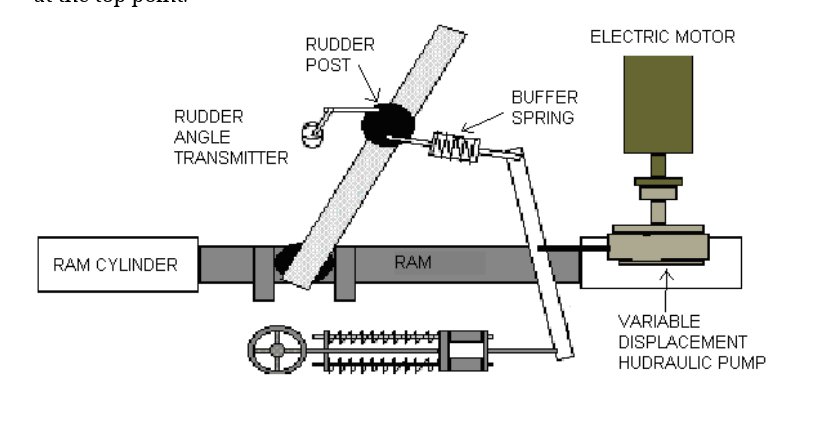What are Steering Gear Safeties ?
Steering gear safeties are mechanisms integrated into the steering gear system to protect the vessel’s steering mechanism from potential damage, ensure safe operation, and alert the crew to any issues. These safeties are critical for both hydraulic and electrical systems, ensuring the steering gear operates within safe limits.

Categories of Steering Gear Safeties:
- Hydraulic Safeties
- Electrical Safeties
Hydraulic Safeties:
- Level Switch: Monitors the hydraulic oil level in the tank, triggering low-level and low-low-level alarms.
- Relief Valve: Prevents overpressure in the hydraulic system by releasing excess pressure.
- Manual Bypass Valve: Allows manual override or bypass of the hydraulic system in case of failure.
- Low-Pressure Valve: Alerts if hydraulic pressure drops below safe operating levels.
- High Lube Oil Temperature Cut-Out: Shuts down the system if lubrication oil temperature exceeds safe limits.
- Low-Level Cut-Out: Shuts down the hydraulic system if the oil level falls below a critical point.
Electrical Safeties:
- Electrical and Mechanical Stopper for Rudder: Prevents the rudder from moving beyond safe limits.
- Electrical Motor Overload Alarm: Warns if the steering motor is drawing excessive current.
- Power Failure Alarm: Alerts the crew in case of a loss of power to the steering system.
- High Temperature Alarm: Triggers if electrical components overheat.
- Self-Starting after Power Failure: Automatically restarts the steering gear after a power outage.
- Short-Circuit Trip: Cuts power to the system in the event of a short circuit.
- Phase Failure Alarm: Detects loss of one or more phases in a three-phase electrical supply.
- 200% Insulation in Motor: Ensures the motor has double insulation for added protection.
Other Safety Devices for the Steering System:
- Hunting Gear: Used to reduce oscillations in the steering gear system.
- Buffer Spring: Helps to absorb shock and prevent mechanical damage.
- Angle Adjusting Stop (Hand Over Position Limit Switch): Limits rudder movement to prevent damage.
- Double Shock Valve: Provides protection against hydraulic shock in the system.
- Relief Valve: Prevents overpressure in the hydraulic system.
- Tank Level Alarm (Oil): Alerts when oil levels in the hydraulic tank drop.
- Overload Alarm: Warns of excessive load on the steering gear system.
These devices work together to ensure the safe and efficient operation of the steering system, helping prevent malfunctions and protecting the vessel from potential hazards.
Follow me on Twitter
